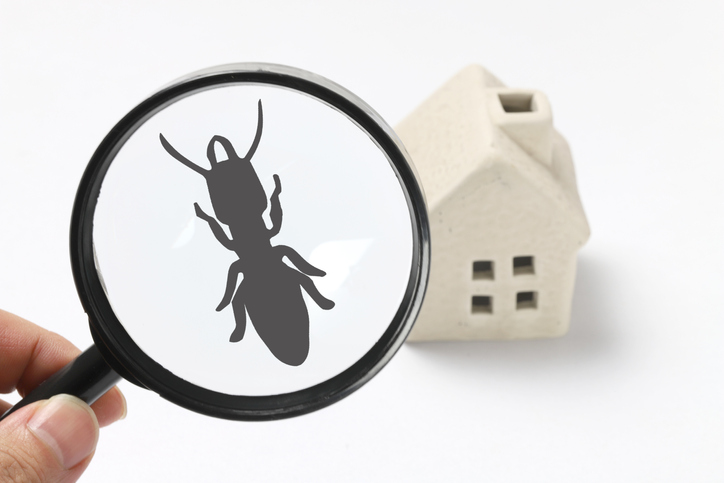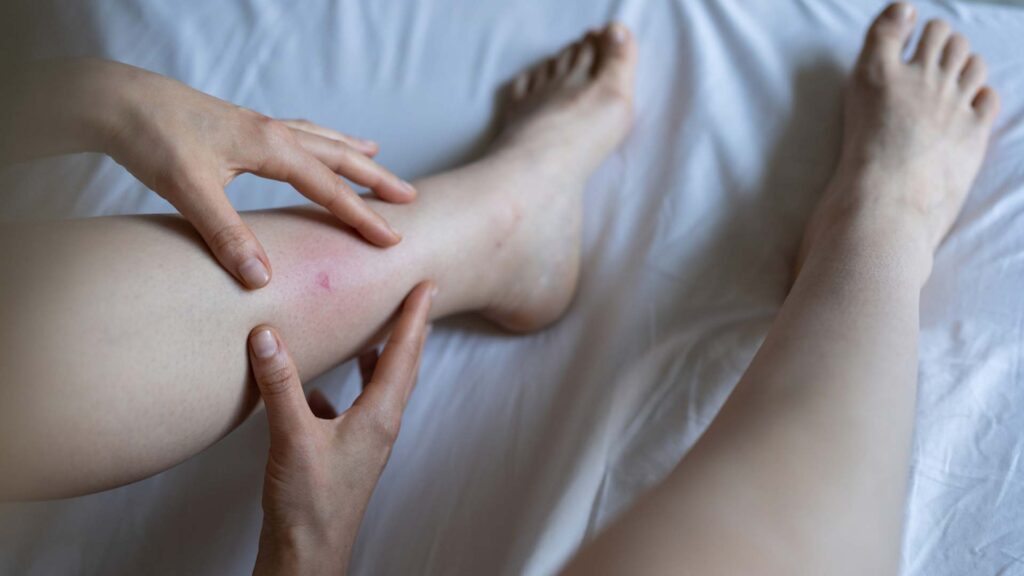What are the Signs of a Bed Bug Infestation
The signs of a bed bug infestation include small, red, itchy bites often in a line or cluster on the skin, tiny blood spots on bedding from crushed bugs, dark fecal droppings on bedding or walls, shed skins, and the presence of tiny, white, oval-shaped eggs. Additionally, finding live or dead bed bugs, particularly in mattress seams, box springs, and furniture joints, is a clear indication of an infestation. Regular inspection and professional pest control are essential for managing and eradicating bed bugs.

Unseen Invaders: The Silent Rise of Bed Bug Infestations in Our Homes
In the stillness of the night, a hidden menace lurks within the sanctity of our bedrooms. This threat doesn’t come from the outside; it resides where we feel most secure, in our own beds. Bed bugs, the tiny, elusive pests, have made an alarming comeback in recent years, transforming from a near-eradicated nuisance to a widespread domestic challenge. These nocturnal creatures, once a mere footnote in pest control history, have now emerged as a significant concern for homeowners, renters, and even businesses.
The resurgence of bed bugs is a phenomenon that defies the advancements of modern pest control. In an era where household pests can often be managed with routine solutions, bed bugs have proven to be a formidable opponent. Their adaptability, stealthy nature, and increasing resistance to traditional pesticides have led to a silent epidemic that is affecting homes across the globe. Unlike other household pests, bed bugs have a specific target: human blood. This makes them not just a nuisance, but a direct threat to human comfort and well-being.
These tiny invaders, often no larger than an apple seed, have mastered the art of concealment. They can hide in the smallest of crevices, emerging under the cover of darkness to feed. Their bites, while not known to transmit diseases, leave itchy, red welts – a distressing sign of their presence. The psychological impact of bed bug infestations can be profound, leading to sleepless nights and a constant sense of unease.
The story of the bed bug’s resurgence is also a tale of globalization. Increased international travel and the movement of goods across borders have facilitated their spread. These pests hitch rides in luggage, clothing, and furniture, effortlessly crossing continents and oceans. Urbanization has also played a role, with densely populated cities offering ideal environments for bed bugs to thrive. In these bustling urban landscapes, bed bugs find endless opportunities to spread from one crowded dwelling to another.
As we delve deeper into the issue of bed bug infestations, it’s crucial to understand not just the signs and solutions, but also the reasons behind their dramatic comeback. This article aims to shed light on the hidden life of bed bugs, their impact on our daily lives, and the measures we can take to reclaim our homes from these unwelcome guests. In doing so, we hope to provide a comprehensive guide to understanding and combating one of the most persistent and intimate challenges facing homeowners today.
Signs of Infestation
Identifying a bed bug infestation early is crucial for effective control and prevention. These pests are masters of concealment, but certain signs can alert homeowners to their presence.
- Bite Marks: The most common and often the first noticed sign of a bed bug infestation is bites on the skin. These bites typically appear as small, red, itchy welts. They often occur in a line or clustered pattern on exposed areas such as the arms, neck, or legs. However, it’s important to note that reactions to bed bug bites can vary significantly from person to person. Some may not show any physical reaction to the bites, making it challenging to identify an infestation based solely on this symptom.
- Blood Spots on Bedding: Bed bugs feed on human blood, often leaving behind small, rusty-colored blood spots on sheets and mattresses. These spots occur when bed bugs are accidentally crushed after feeding. The spots can also be a result of the bites themselves, where small amounts of blood may seep out.
- Fecal Droppings: Bed bug fecal matter appears as tiny, dark spots, similar to the size of a dot made by a pen or marker. These droppings are often found in areas where bed bugs hide and feed, such as mattress seams, bed frames, and behind headboards. The droppings, composed of digested blood, can smear when wiped, leaving a brownish stain.
- Shed Skins: As bed bugs mature, they shed their exoskeletons, leaving behind clear, shell-like remnants. These shed skins are often found in the same areas as live bugs and can be a clear indicator of an infestation, especially if found in various sizes, indicating a growing population.
- Eggs and Eggshells: Bed bug eggs are tiny (about 1mm), white, and oval-shaped. They are often laid in hidden areas, such as in cracks, crevices, and the seams of mattresses and furniture. Along with the eggs, homeowners might also find pale yellow skins that nymphs shed as they grow larger.
- Live or Dead Bugs: Spotting live or dead bed bugs is a definitive sign of an infestation. Adult bed bugs are about the size of an apple seed, reddish-brown, and oval-shaped. They tend to hide in tight spaces close to where people sleep, including in mattress seams, box springs, bed frames, and behind headboards.
- Musty Odor: A large bed bug infestation can produce a musty, sweet smell, caused by the bugs’ scent glands. This odor is often described as similar to the smell of ripe raspberries or coriander and can be noticeable in heavily infested areas.
- Unusual Hiding Spots: In severe infestations, bed bugs can spread beyond the bedroom, hiding in unusual places like electrical outlets, under wallpaper, inside electronics, and even behind picture frames. They prefer dark, secluded areas, so any crack or crevice in a home can potentially harbor these pests.
Recognizing these signs is the first step in addressing a bed bug problem. Homeowners should regularly inspect their sleeping areas and surrounding furniture, especially if any of these signs are present. Early detection is key to preventing a small problem from becoming a widespread infestation.
Bed Bug Bites At A Glance
Apperance
Small, red, and itchy welts, often in a line or cluster.
Common Areas
Bites commonly appear on exposed areas like arms, neck, and face.
Reaction Variability
Not everyone reacts to bed bug bites; some may have no visible signs.
Medical Attention
Seek medical care if you experience allergic reactions or severe itching.
Recognizing the Signs of Bed Bug Infestation
| Signs of Infestation | Description | Why it’s Important | Where to Check |
|---|---|---|---|
| Bite Marks | Small, red, itchy welts, often in a line or cluster. | Indicates active feeding; varies from person to person. | Exposed skin areas: arms, neck, legs. |
| Blood Spots on Bedding | Small, rusty-colored spots on sheets and mattresses. | Result of bed bugs being crushed after feeding or from bite sites. | Sheets, pillowcases, mattress seams. |
| Fecal Droppings | Tiny, dark spots, similar to a marker dot; can smear brownish. | Shows concentrated areas of bed bug activity. | Mattress seams, bed frames, behind headboards. |
| Sheds Skin | Clear, exoskeleton remnants in various sizes. | Indicates a growing population and maturation of bed bugs. | Near hiding spots: mattress seams, furniture joints. |
| Eggs and Eggshells | Tiny (1mm), white, oval-shaped eggs and pale yellow skins. | Sign of reproduction and an increasing infestation. | Cracks, crevices, mattress seams, furniture. |
| Live or Dead Bugs | Adult bed bugs are reddish-brown, about the size of an apple seed. | Direct evidence of infestation. | Mattress seams, box springs, bed frames, headboards. |
| Musty Odor | Sweet, musty smell, similar to ripe raspberries or coriander. | Indicates a large infestation; caused by scent glands. | Heavily infested areas, especially in bedrooms. |
| Unusual Hiding Spots | Bed bugs in electrical outlets, under wallpaper, inside electronics. | Shows severity and spread of infestation. | Beyond the bedroom: living room, behind picture frames, electronics. |
The Stealthy Culprits: A Closer Look at Bed Bugs
Bed bugs, known scientifically as Cimex lectularius, have coexisted with humans for centuries. These tiny insects, often no larger than an apple seed, have become one of the most challenging pests to eradicate from our homes. Understanding their biology, behavior, and adaptability is crucial in recognizing and combating their presence.
Adult bed bugs are about 4-5 mm long, with a flat, oval-shaped body that becomes more balloon-like and reddish after feeding. They possess a beak-like structure for extracting blood, their sole food source. These insects are wingless and cannot fly, but they are adept at crawling quickly over floors, walls, and ceilings.
Young bed bugs, or nymphs, pass through five developmental stages, shedding their skin at each stage. These skins, often found in infestation areas, are telltale signs of their presence. The eggs, another indicator of an infestation, are tiny (about 1mm), white, and hard to spot without magnification.
Bed bugs are primarily nocturnal, feeding on human blood while the host sleeps. Their bites are painless, and it’s their saliva that causes the itchy welts on human skin. They can survive for months without feeding, making them resilient even in unoccupied spaces.
These pests are experts at concealment, hiding in the smallest of spaces. Common hiding spots include mattress seams, bed frames, behind wall hangings, and within furniture joints. Their flat bodies enable them to fit into spaces as thin as a credit card.
Common Bed Bug Hideouts
One of the reasons for the dramatic resurgence of bed bugs in recent decades is their adaptability. They have developed resistance to many traditional pesticides, making chemical treatments less effective. Their ability to go unnoticed and their rapid reproduction rate also contribute to their persistence. A single female can lay hundreds of eggs in her lifetime, allowing for rapid population growth.
Global travel has facilitated their spread, as bed bugs easily hitch rides in luggage, clothing, and personal belongings. Urban environments, with their high density of living spaces and frequent resident turnover, provide ideal conditions for bed bug infestations to thrive.
While bed bugs are not known to transmit diseases, their presence can lead to health concerns. Bites can result in allergic reactions, and the psychological impact of an infestation can be significant, leading to stress, anxiety, and sleep disturbances.
Their stealthy nature, combined with these health and environmental concerns, underscores the importance of early detection and professional intervention in managing bed bug infestations. Understanding these elusive pests is the first step in protecting our homes and health from their unwelcome presence.
Preventing Bed Bug Infestations
The Spread and Impact
Bed bugs are expert hitchhikers, traveling on luggage, clothing, and second-hand furniture. They can move between apartments and homes with ease, making infestations a community-wide concern. While they don’t transmit diseases, their bites can cause allergic reactions and secondary infections due to scratching.

Expanded Strategies for Combating Bed Bug Infestations
- Combating bed bug infestations requires a comprehensive and persistent approach, often involving both chemical and non-chemical methods. The first step is thorough inspection. Professionals, equipped with specialized tools, can identify even the most hidden bed bugs and their eggs. This inspection should extend beyond the bedroom, encompassing furniture, walls, and even small electronics, as bed bugs can reside in the most unexpected places.
- Once the extent of the infestation is understood, a combination of treatments is often employed. Non-chemical methods include heat treatment, where infested items are exposed to temperatures high enough to kill bed bugs at all life stages. Steam treatment is another effective method, particularly useful for treating mattresses, box springs, and upholstered furniture. Vacuuming is a crucial step in physically removing bed bugs and their debris from cracks and crevices. However, vacuum bags must be disposed of carefully to prevent re-infestation.
- In addition to these methods, chemical treatments are often necessary for complete eradication. Today’s pesticides are safer and more targeted, but they must be used judiciously to avoid resistance. Pest management professionals may use a range of products, including insect growth regulators that disrupt the bed bugs’ life cycle. It’s important to note that over-the-counter foggers and sprays are generally ineffective and can even spread the infestation. Preventive measures are equally important; encasing mattresses and box springs can prevent bed bugs from hiding in them, while reducing clutter eliminates their potential habitats. Regular monitoring and maintenance treatments can help prevent future infestations, ensuring a long-term solution to this pervasive problem.
The Bigger Picture: Understanding the Global Resurgence
The resurgence of bed bugs in the 21st century is a global issue, transcending borders and affecting both developed and developing nations. Studies have shown a marked increase in bed bug infestations worldwide, a trend linked to factors such as increased international travel, urbanization, and the insects’ growing resistance to traditional pesticides. Urban centers, with their high population density and frequent traveler turnover, are particularly vulnerable. This resurgence is not just a matter of discomfort but also has economic implications, with the pest control industry seeing a significant increase in demand for bed bug-related services.
Environmental factors also play a role in the spread of bed bugs. Climate change, with its associated fluctuations in temperature and humidity, can affect the reproductive cycles and survival rates of bed bugs. Warmer climates tend to accelerate their life cycle, potentially leading to more rapid infestations. Additionally, the global second-hand market for furniture and clothing can unwittingly aid in the spread of these pests, as they are adept at hiding in small crevices and can easily be transported from one location to another.
The challenge in controlling bed bugs lies in their elusive nature and adaptability. They can survive for months without feeding, making them difficult to eradicate completely. Public education on prevention and early detection, combined with research into more effective control methods, is crucial in the fight against this growing problem. As the world becomes more interconnected, the need for coordinated efforts in bed bug management and control becomes increasingly important, calling for collaboration between public health officials, pest control professionals, and the general public.
Bed Bug Myths Debunked
Myth: Bed bugs transmit diseases.
Fact: There’s no evidence that bed bugs transmit diseases to humans.
Myth: Bed bugs are too small to see.
Fact: Adult bed bugs are visible, about the size of an apple seed.
Myth: Bed bugs only infest dirty homes.
Fact: Bed bugs are not attracted to dirt; they are attracted to warmth and carbon dioxide
Navigating the Resurgence: A Comprehensive Approach to Bed Bug Management
The resurgence of bed bugs in our homes and communities is more than a mere nuisance; it’s a call to action for homeowners, landlords, and public health officials alike. This challenge, while daunting, is not insurmountable. Tackling it requires a blend of vigilance, education, and proactive measures.
Vigilance is Key: Homeowners must be vigilant. Regular inspections of bedding, furniture, and potential hiding spots are essential. Early detection can prevent a small problem from becoming a widespread infestation. This vigilance extends to travelers who should inspect hotel rooms and luggage, a common vector for bed bug spread.
Education and Awareness: Public education plays a pivotal role. Understanding the signs of bed bug infestations, their behavior, and prevention strategies is crucial. Educational campaigns can demystify misconceptions, such as the belief that bed bugs are only found in unclean environments. They are indiscriminate invaders, found in both immaculate homes and cluttered spaces.
Professional Intervention: When infestations occur, professional pest control services are often necessary. These experts can assess the severity of the problem and implement a tailored eradication plan. This may include a combination of heat treatments, insecticides, and ongoing monitoring. Homeowners should be prepared to cooperate fully with these professionals, following guidelines to prepare their homes for treatment.

When to Call the Professionals
- Persistent Infestation: If DIY methods fail, professional intervention is necessary.
- Safe Pesticide Use: Professionals use safer, more effective treatments.
- Comprehensive Approach: Experts can provide a combination of chemical and non-chemical treatments.
- Follow-up: Regular inspections post-treatment to ensure complete eradication.
-
Best OverallSave $50 on your first recurring service today with code GET50
-
Best for TermitesSave $50 on pest control services with code SAVE50 at checkout
-
Best for Bed BugsGet a free estimate on pest control services for your home
-
Best for Wildlife RemovalCall For A Fast & FREE Phone Estimate Today
-
Best for Natural TreatmentGet $100 Off Your Termite Treatment Service
Policy and Community Action: On a larger scale, policy action can be instrumental. Some cities have implemented regulations requiring landlords to disclose bed bug histories to potential tenants. Community-wide efforts, including regular inspections in apartment complexes and public buildings, can curb the spread.
Technological Advancements: Research into more effective bed bug control methods is ongoing. Innovations in pesticide development, monitoring tools, and non-chemical treatments offer hope for more effective and environmentally friendly solutions.
Personal Responsibility and Cooperation: Finally, managing bed bug infestations is a shared responsibility. Individuals must take personal steps to reduce risks, such as inspecting second-hand furniture and reducing clutter. Cooperation with neighbors, landlords, and local health departments can enhance community-wide efforts.
The bed bug resurgence is a complex issue, intertwining public health, personal responsibility, and community action. By staying informed, vigilant, and cooperative, we can tackle this challenge head-on. The goal is clear: to reclaim our homes and communities from these unwelcome invaders, ensuring our living spaces remain safe and comfortable.
FAQs
What are the most common signs of a bed bug infestation?
The most common signs include bites on the skin, small blood stains on bedding, dark or rusty spots of bed bug excrement on sheets, mattresses, and walls, shed skins, and the presence of live or dead bed bugs.
How do bed bug bites look?
Bed bug bites often appear as small, red, itchy welts, typically in a line or clustered together. However, reactions to bites can vary, with some individuals showing no visible signs.
Can bed bugs be seen with the naked eye?
Yes, adult bed bugs are visible to the naked eye. They are about the size of an apple seed, reddish-brown, and oval-shaped.
Where should I look for bed bugs in my home?
Check the seams of mattresses, box springs, bed frames, and headboards. Also inspect cracks and crevices in walls, furniture, behind wallpaper, and cluttered areas.
Are bed bugs only found in beds?
No, while they are commonly found in beds, bed bugs can also inhabit sofas, chairs, curtains, carpets, and even electrical outlets.
Do bed bugs leave any smell?
Yes, a heavy bed bug infestation can produce a musty, sweet smell, often described as similar to berries.
Can bed bugs spread diseases?
Currently, there is no evidence to suggest that bed bugs transmit diseases to humans. However, their bites can lead to allergic reactions and secondary skin infections.
How do bed bugs spread from one place to another?
Bed bugs can hitch a ride on luggage, clothing, used furniture, and other personal belongings, making them excellent travelers.
Is it possible to have bed bugs and not see them?
Yes, bed bugs are experts at hiding and can go unnoticed, especially in the early stages of an infestation or if the number of bugs is small.
What should I do if I suspect a bed bug infestation?
If you suspect an infestation, it’s important to confirm their presence. Look for physical signs of bed bugs and consider contacting a pest control professional for a thorough inspection and treatment plan.









